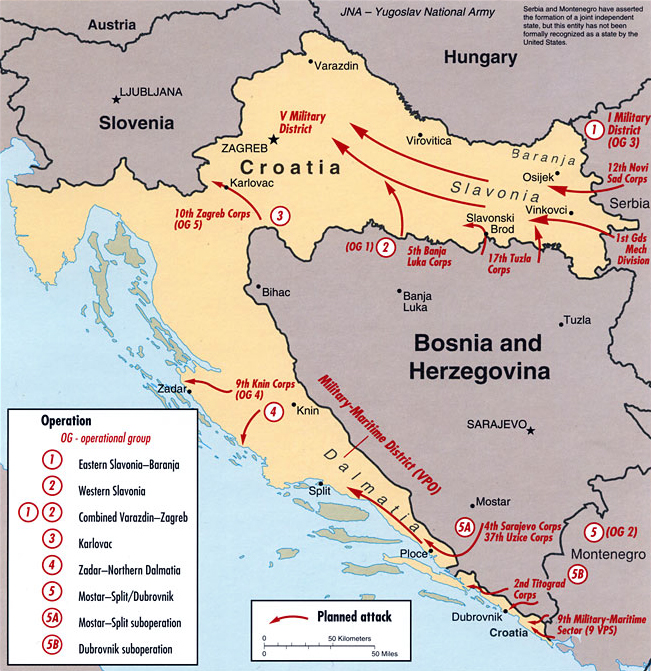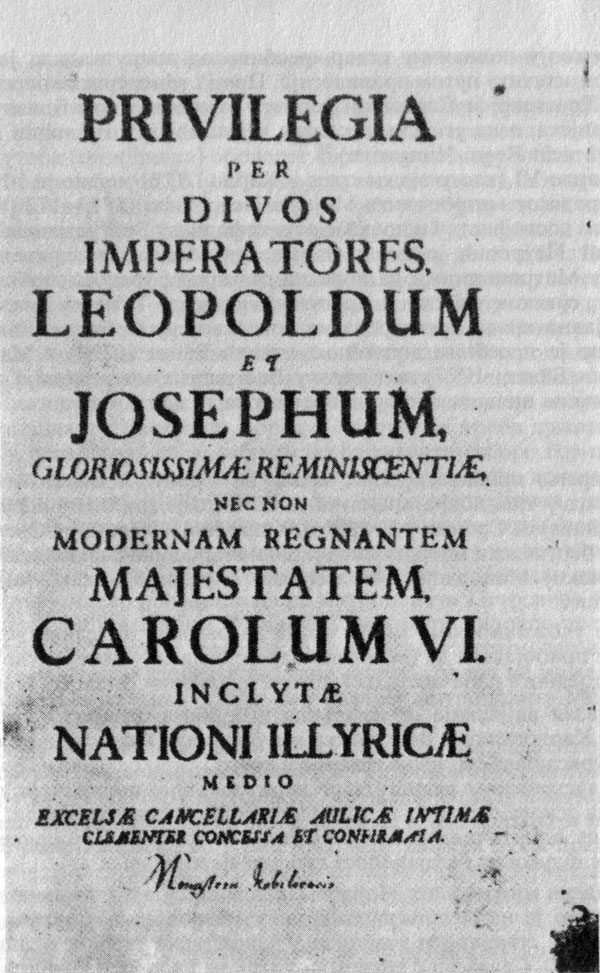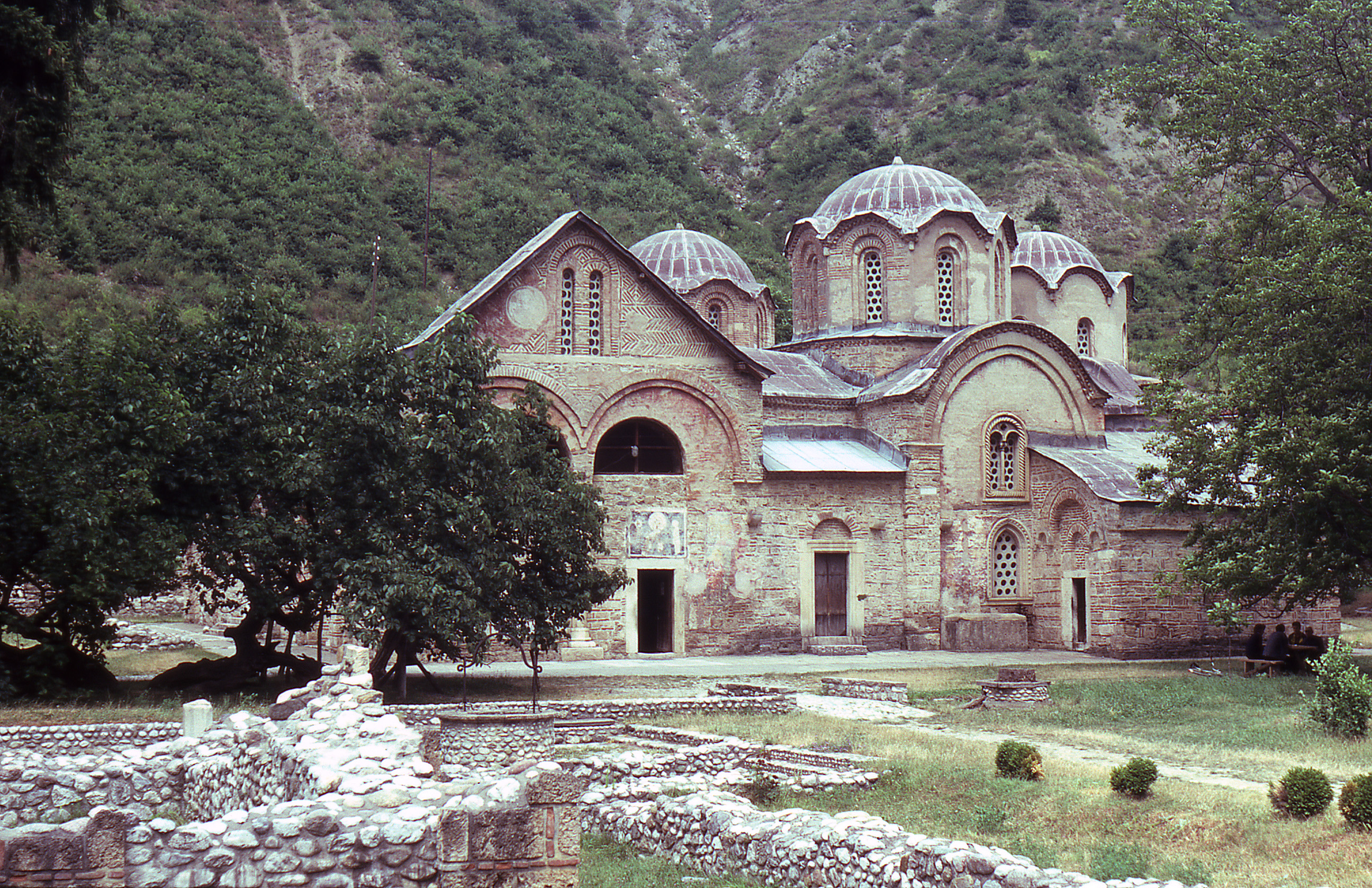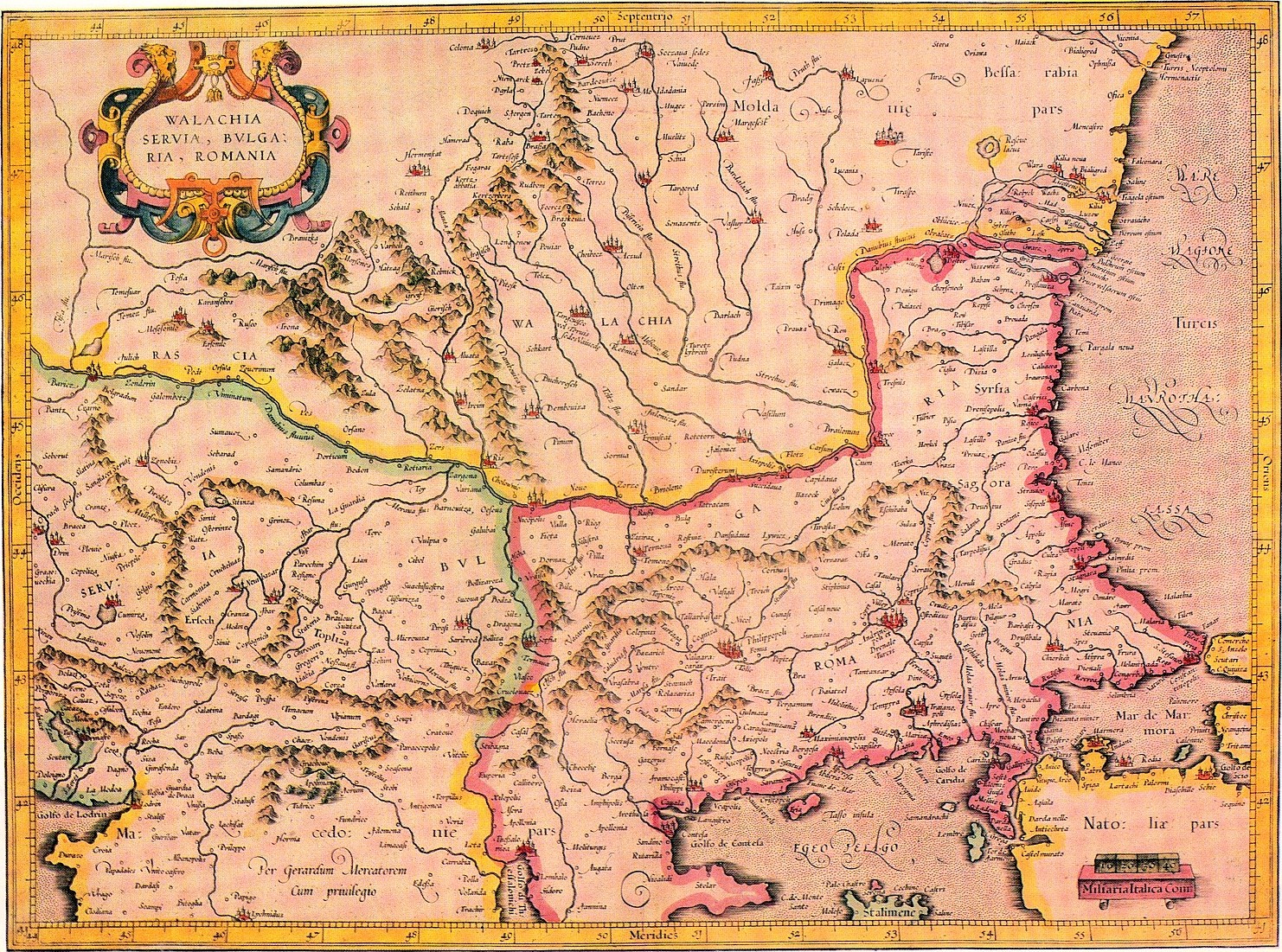|
Eparchy Of Karlovac And Zrinopolje
The Eparchy of Gornji Karlovac ( sr-Cyrl, Епархија горњокарловачка, ; "Eparchy of Upper Karlovac") is an eparchy of the Serbian Orthodox Church seated in the city of Karlovac, Croatia. It covers the area of Banovina, Kordun, Lika, Krbava, Gorski Kotar, as well as northern Croatia and Istria. The important Orthodox Christian monasteries in the region are ''Gomirje'' near Ogulin and Komogovina Monastery between Glina and Kostajnica. History The Serbian Orthodox ''Ličko-Krbavska and Zrinopoljska Eparchy'' was established in 1695 by the Metropolitan Atanasije Ljubojević and certified by Emperor Joseph I in 1707. This eparchy (from the 19th century known as the Eparchy of Upper Karlovac) was the ecclesiastical centre of the Serbian Orthodox Church in this region, populated by Serbs, the community known at the time as "Rascians". This eparchy was under jurisdiction of the Metropolitan of Dabar-Bosnia, directly under the restored Serbian Patriarch in Peć ... [...More Info...] [...Related Items...] OR: [Wikipedia] [Google] [Baidu] |
Eastern Orthodox
Eastern Orthodoxy, otherwise known as Eastern Orthodox Christianity or Byzantine Christianity, is one of the three main Branches of Christianity, branches of Chalcedonian Christianity, alongside Catholic Church, Catholicism and Protestantism. Like the Pentarchy of the first millennium, the mainstream (or "Canon law of the Eastern Orthodox Church, canonical") Eastern Orthodox Church is Organization of the Eastern Orthodox Church, organised into autocephalous churches independent from each other. In the 21st century, the Organization of the Eastern Orthodox Church#Autocephalous Eastern Orthodox churches, number of mainstream autocephalous churches is seventeen; there also exist Organization of the Eastern Orthodox Church#Unrecognised churches, autocephalous churches unrecognized by those mainstream ones. Autocephalous churches choose their own Primate (bishop), primate. Autocephalous churches can have Ecclesiastical jurisdiction, jurisdiction (authority) over other churches, som ... [...More Info...] [...Related Items...] OR: [Wikipedia] [Google] [Baidu] |
Komogovina
Komogovina ( sr-Cyrl, Комоговина) is a village in the Donji Kukuruzari municipality of central Croatia. It is the location of the Serbian Orthodox The Serbian Orthodox Church ( sr-Cyrl-Latn, Српска православна црква, Srpska pravoslavna crkva) is one of the autocephalous (ecclesiastically independent) Eastern Orthodox Christian churches. The majority of the populat ... Komogovina Monastery. Notable people * Ratko Dmitrović References Populated places in Sisak-Moslavina County Serb communities in Croatia {{SisakMoslavina-geo-stub ... [...More Info...] [...Related Items...] OR: [Wikipedia] [Google] [Baidu] |
Gorica Monastery
Gorica Monastery () is a Franciscan monastery in Gorica near Livno, Bosnia and Herzegovina Bosnia and Herzegovina, sometimes known as Bosnia-Herzegovina and informally as Bosnia, is a country in Southeast Europe. Situated on the Balkans, Balkan Peninsula, it borders Serbia to the east, Montenegro to the southeast, and Croatia to th .... References Livno Roman Catholic Diocese of Banja Luka History of Tropolje {{BosniaHerzegovina-struct-stub ... [...More Info...] [...Related Items...] OR: [Wikipedia] [Google] [Baidu] |
Medak Monastery
Medak, formerly known as Siddapuram, is a town in Medak district of the Indian state of Telangana. It is a municipality and the headquarters of Medak mandal in Medak revenue division. Etymology and History Medak was originally named ''Methukudurgam'' (మెతుకుదుర్గం / मॆतुकु दुर्गम्) or ''Methuku Seema'' (translated to grain in Telugu) due to the growth of rice here. Geography Medak is located at . It has an average elevation of 442 meters (1450 feet). Climate Demographics census of India, the town had a population of 44,255 with 9011 households. The total population constitute, 21,336 males and 22,919 females —a sex ratio of 1074 females per 1000 males. 4,815 children are in the age group of 0–6 years, of which 2,418 are boys and 2,397 are girls —a ratio of 991 per 1000. The average literacy rate stands at 78.56% with 30,984 literates, significantly higher than the state average of 66.46%. Governance Medak munici ... [...More Info...] [...Related Items...] OR: [Wikipedia] [Google] [Baidu] |
Komogovina Monastery
Monastery of the Transfiguration of the Lord is a Serbian Orthodox monastery in Komogovina, Croatia that was in operation between 1693 and 1777. It was established by monks from Bosanska Krajina in the 17th century in 1693. Their earlier monastery below the Kozara Mountain was destroyed in war against the Ottoman Empire. Its first monks were Jovo Svilokos and Silvestar Prodanović while monk Atanasije Ljubojević managed to attain religious diploma recognizing monastery's spiritual guidance over the Orthodox Vlachs and Serbs in between the Kupa and Una rivers. In between the 1715 and 1738 the monastery was the seat of the first three epískoposes of the historical Serbian Orthodox Eparchy of Kostajnica- those being Ugarković, Dimitrijević and Ljubibratić. Epískopos Andrijević oversaw the construction of present day church in the 1741-1749 period. Due to its small size the monastery was closed down in 1777 and its possessions were transferred to the Gomirje Monastery and ... [...More Info...] [...Related Items...] OR: [Wikipedia] [Google] [Baidu] |
Croatian War Of Independence
The Croatian War of Independence) and (rarely) "War in Krajina" ( sr-Cyrl-Latn, Рат у Крајини, Rat u Krajini) are used. was an armed conflict fought in Croatia from 1991 to 1995 between Croats, Croat forces loyal to the Government of Croatia—which had declared Independence of Croatia, independence from the Socialist Federal Republic of Yugoslavia (SFRY)—and the Serbs, Serb-controlled Yugoslav People's Army (JNA) and Serbs of Croatia, local Serb forces, with the JNA ending its combat operations by 1992. A majority of Croats supported Croatia's independence from Yugoslavia, while many ethnic Serbs living in Croatia, supported by Republic of Serbia (1992–2006), Serbia, opposed the secession and advocated Serb-claimed lands to be in a common state with Serbia. Most Serbs sought a new Serb state within a Yugoslav federation, including areas of Croatia and Bosnia and Herzegovina with ethnic Serb majorities or significant minorities, and attempted to conquer as muc ... [...More Info...] [...Related Items...] OR: [Wikipedia] [Google] [Baidu] |
Metropolitanate Of Karlovci
The Metropolitanate of Karlovci () was a metropolitanate of the Eastern Orthodox Church that existed in the Habsburg monarchy between 1708 and 1848. Between 1708 and 1713, it was known as the Metropolitanate of Krušedol Monastery, Krušedol, and between 1713 and 1848, as the Metropolitanate of Sremski Karlovci, Karlovci. In 1848, it was elevated to the Patriarchate of Karlovci, which existed until 1920, when it was merged with the Metropolitanate of Belgrade and other Eastern Orthodox jurisdictions in the newly established Kingdom of Yugoslavia, Kingdom of Serbs, Croats and Slovenes to form the Serbian Orthodox Church. History During the 16th and 17th centuries, all of the southern and central parts of the former medieval Kingdom of Hungary (1301–1526), Kingdom of Hungary were under Turkish rule and organized as Ottoman Hungary. Since 1557, Serbian Orthodox Church in those regions was under jurisdiction of the Serbian Patriarchate of Peć. During the Great Turkish War, Aus ... [...More Info...] [...Related Items...] OR: [Wikipedia] [Google] [Baidu] |
Serbian Patriarchate Of Peć
Serbian Patriarchate of Peć (, ''Srpska patrijaršija u Peći''), or simply Peć Patriarchate (, ''Pećka patrijaršija''), was an autocephaly, autocephalous Eastern Orthodox Patriarchate that existed from 1346 to 1463, and then again from 1557 to 1766 with its seat in the Patriarchal Monastery of Peć. It had ecclesiastical jurisdiction over Eastern Orthodox Christians in Serbian Lands and other western regions of Southeastern Europe. Primates of the Patriarchate were styled ''Archbishop of Peć and Serbian Patriarch''. Medieval Period (1346–1463) Since 1219, the Eastern Orthodox Church in the medieval Kingdom of Serbia (medieval), Kingdom of Serbia was organized as an autocephaly, autocephalous Archbishopric seated at first in the Monastery of Žiča and since the middle of the 13th century in the Patriarchal Monastery of Peć, Monastery of Peć. Political expansion of the Serbian medieval state culminated under the reign of King Stefan Dušan (1331–1355), who conquere ... [...More Info...] [...Related Items...] OR: [Wikipedia] [Google] [Baidu] |
Metropolitanate Of Dabar-Bosnia
The Metropolitanate of Dabar-Bosnia () is a Metropolis (religious jurisdiction), metropolis of the Serbian Orthodox Church in Bosnia and Herzegovina, Episcopal see, seated in Sarajevo. Since 2017, Metropolitan of Dabar and Bosnia is Hrizostom Jević. History The medieval Eparchy of Dabar () was founded in 1219 by the first Serbian archbishop, Saint Sava. The seat of bishops of Dabar was in the Banja Monastery near Priboj. Eparchy of Dabar had jurisdiction over the region of lower Lim (river), Lim and middle Drina on the borders with medieval Bosnia. In 1557, Serbian Patriarchate of Peć was restored and the Eparchy of Dabar and Bosnia was returned to its jurisdiction, with its bishops of holding the honorary title of metropolitan. In 1766, when the autocephalous Serbian Patriarchate of Peć was abolished, Eparchy of Dabar-Bosnia and all other Serbian eparchies under Ottoman Empire, Ottoman rule came under the jurisdiction of Ecumenical Patriarchate of Constantinople. Bishop ... [...More Info...] [...Related Items...] OR: [Wikipedia] [Google] [Baidu] |
Rascians
Rascians ( / ''Raši, Rašani''; ) was a historical term for Serbs. The term was derived from the Latinized name for the central Serbian region of Raška (; sr-Cyrl, Рашка). In medieval and early modern Western sources, exonym ''Rascia'' was often used as a designation for Serbian lands in general, and consequently the term ''Rasciani'' became one of the most common designations for Serbs. Because of the increasing migratory concentration of Serbs in the southern Pannonian Plain, since the late 15th century, those regions also became referred to as ''Rascia'', since they were largely inhabited by ''Rasciani'' (Rascians). Among those regions, term ''Rascia'' (Raška) was most frequently used for territories spanning from western Banat to central Slavonia, including the regions of Syrmia, Bačka, and southern Baranja. From the 16th to the 18th century, those regions were contested between the Ottoman Empire and the Habsburg monarchy, and today they belong to several modern coun ... [...More Info...] [...Related Items...] OR: [Wikipedia] [Google] [Baidu] |
Joseph I, Holy Roman Emperor
Joseph I (Joseph Jacob Ignaz Johann Anton Eustachius; 26 July 1678 – 17 April 1711) was Holy Roman Emperor and ruler of the Habsburg monarchy from 1705 until his death in 1711. He was the eldest son of Leopold I, Holy Roman Emperor from his third wife, Eleonor Magdalene of Neuburg. Joseph was crowned King of Hungary at the age of nine in 1687 and was elected King of the Romans at the age of eleven in 1690. He succeeded to the thrones of Bohemia and the Holy Roman Empire when his father died. Joseph continued the War of the Spanish Succession, begun by his father against Louis XIV of France, in an attempt to make his younger brother Charles (later Emperor Charles VI) King of Spain. In the process, however, owing to the victories won by his military commander, Prince Eugene of Savoy, he did succeed in establishing Austrian hegemony over Italy. Joseph also had to contend with a protracted revolt in Hungary, fomented by Louis XIV. Neither conflict was resolved until the Treaty of Ut ... [...More Info...] [...Related Items...] OR: [Wikipedia] [Google] [Baidu] |






